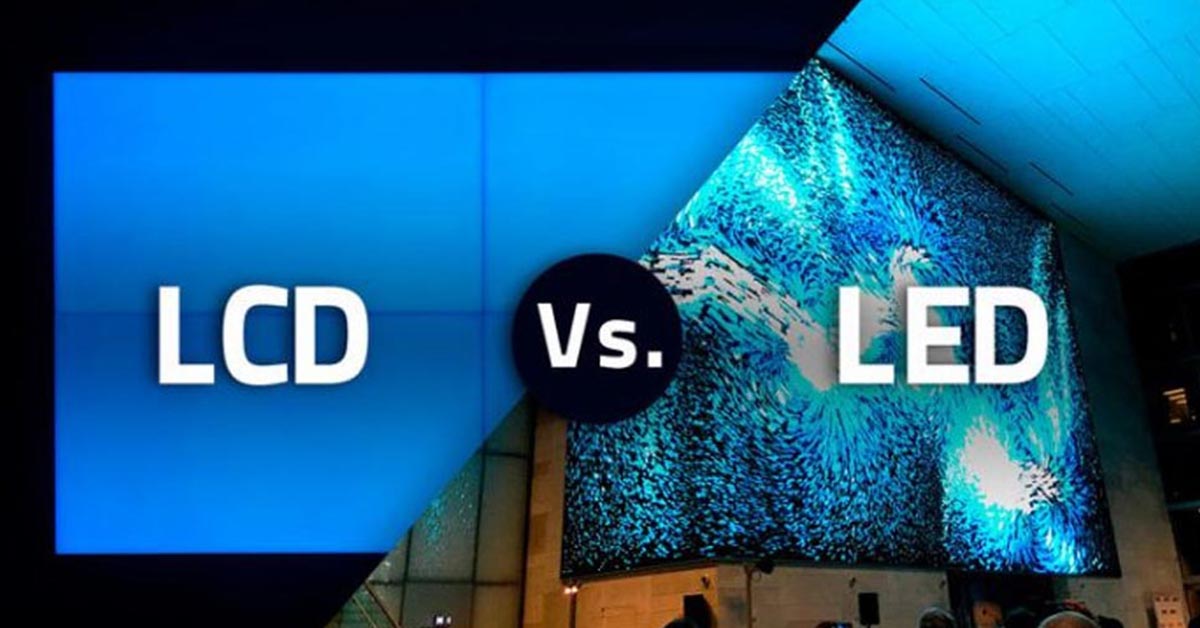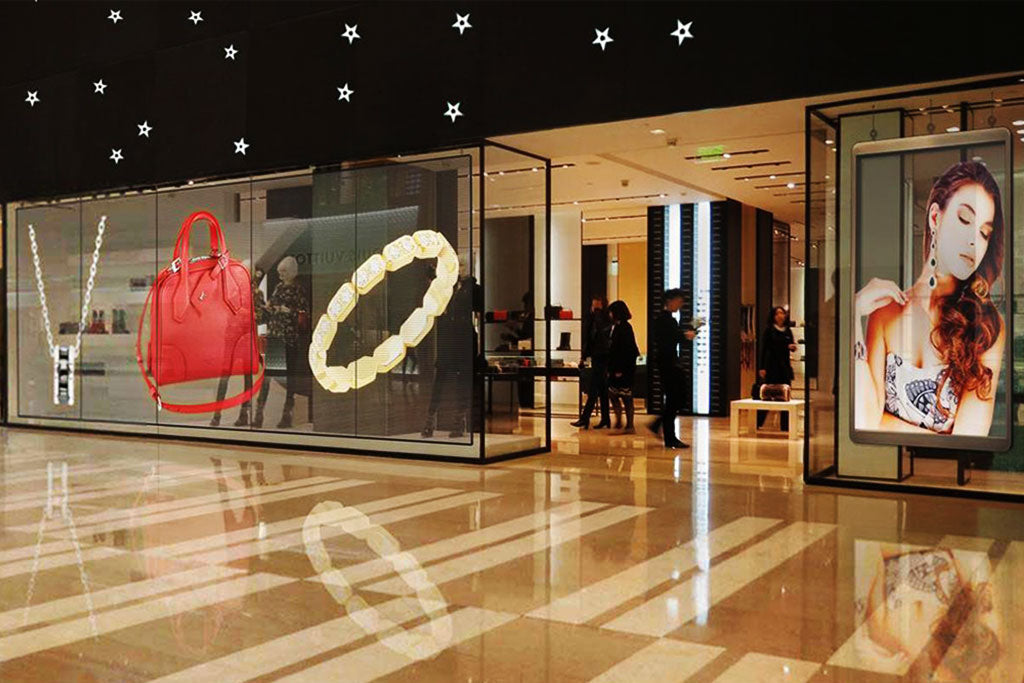

Window displays have always been the silent storytellers of retail—those moments where passersby decide in an instant whether to step inside. That is why it’s important to figure out the best ways to advertise in store windows considering that today’s store windows can do more than tempt—they can talk with dynamic visuals, interactive moments, and mood-defining tech that fuses architecture with ambition. From groundbreaking transparent LED displays to immersive interactive transparent displays, here’s how brands can transform their storefronts into powerful marketing canvases.
There’s a unique kind of magic when digital content appears to float on your shopfront glass. A see-through advertising screen—built with micro-LED modules on transparent acrylic—delivers bright visuals without hiding what’s behind the glass. These window display advertising screens offer up to 80% transparency and impressive brightness (4,500–6,000 nits), ensuring visibility even in daylight. When installed beneath your store’s glass facade, they twinkle to life at night and blend into the storefront by day. The result is advertising that coexists with architecture, not competes with it.

Retailers in fashion, electronics, or luxury goods lean into these luxe, futuristic panels to signal premium status while highlighting product lines. Their modular size variations suit everything from boutique windows to entire mall atriums—making them perfect as digital storefront screens or transparent video walls.
More than just visual allure, interactive transparent displays convert lookers into doers. Imagine a shopper tapping a floating product to view specs, change colors, or even place orders. This tech—blending motion sensors or touch overlays on transparent panels—invites passersby to engage directly. With social media-driven content or interactive promotions, these displays become part game, part marketing genius.
They shine when used at trade show booths or brand activations, where rent transparent screen setups in hubs like Los Angeles let brands experiment with pop-ups, product launches, or seasonal campaigns. Today’s audiences aren’t just watching—they expect to participate.

For stores that are deciding the best ways to advertise in store windows and craving for the next level of “wow,” holographic display screens bring 3D illusions into view. Not true volumetric holograms, but layered projection optics that create floating visuals just behind or in front of glass panels. Whether it’s a sneaker spinning in mid-air or a futuristic car part hovering beside real merch, this technique fuses storytelling and spectacle.
It’s no surprise that luxury brands and high-end automotive showrooms employ this to elevate their luxury store digital signage—all without blocking their interiors. Installations in lobbies, trade fairs, or galleries not only captivate foot traffic but become social media magnets—turning visitors into brand ambassadors.
A truly immersive window installation must meet more than style specifications—it must address brightness, transparency, weather resilience, and aesthetics. Outdoor installations need high-brightness, UV-resistant boards; indoor setups must balance clarity and viewing angles. Thankfully, modern digital screen behind glass systems support modular design, making transparent screen installation across flat, curved, or irregular glass surfaces much more accessible.
Even logistics have adapted: global suppliers offer transparent digital signage options in both permanent and rental models. From transparent screen rental Los Angeles to global providers offering modular panels, brands can scale or prototype quickly.
The real power of transparent tech lies in storytelling. Retailers are using creative digital signage ideas like augmented product overlays, countdown timers, live social media feeds, and motion-triggered visuals—all designed to drive a pause, a tweet, or a purchase. Seasonal animations, mirrored after the city outside, create a cohesive atmosphere. Interactive versions double down by offering options like “swipe to shop” or unlocking exclusive offers.
These displays don’t just show content—they spark curiosity which is important in planning for the best ways to advertise in store windows. For example, a cosmetics brand might demo lip shades on a virtual model, then invite a visitor to try it in-store. Or a real estate office could animate property photos in mid-air to entice passerby look-ins.
All of this innovation comes at a cost—typically several thousand dollars per square meter for transparent LED, and even more for interactive or holographic models. But in deciding the best ways to advertise in store windows, the costs must be measured against engagement, brand positioning, and store visits. Many reports substantial foot traffic increases—some as high as 30–60%—especially when interactive or immersive elements are included.
Rentals offer flexible access to premium displays without heavy upfront investment—ideal for campaigns, store launches, and seasonal promotions. Modular panels mean upgrades or swaps can happen piece by piece, making the investment future-proof.
For ultra-slim aesthetics and smooth animations, transparent OLED displays enter the conversation. Although pricier and less sunlight-friendly than LED, they offer superior contrast, color depth, and form factor. Typically used indoors in hotel lobbies, high-end brand showrooms, or concept stores, transparent OLED is a rising star in the luxury signage space.
Advertisements that stop a shopper have evolved beyond static displays. Today’s best solutions blend:
Whether it’s a glass LED screen behind your window, a streaming digital storefront screen, or a floating product via hologram, the goal is to merge attention, technology, and atmosphere into one memorable experience.